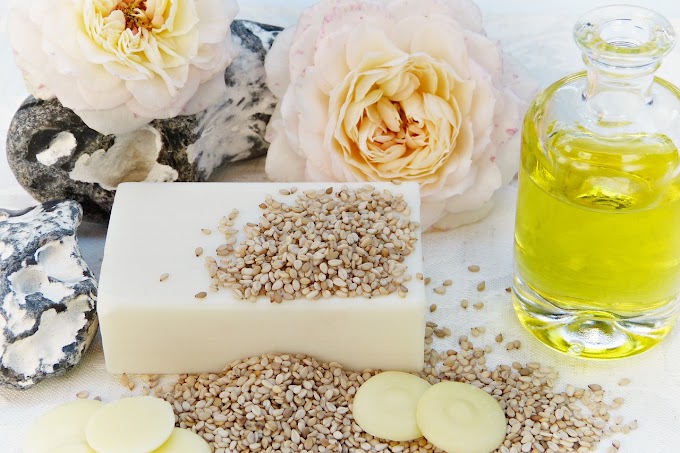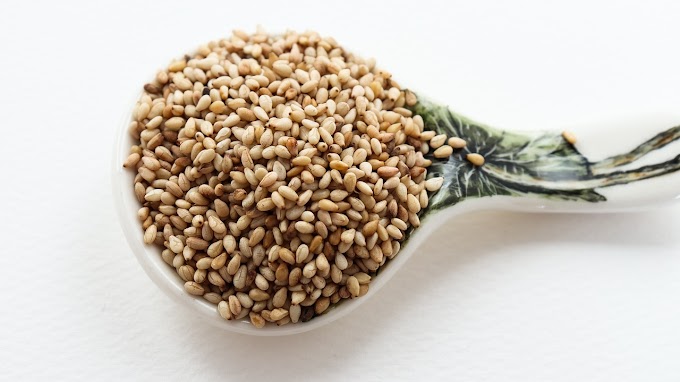Introduction
Ayurveda, the ancient Indian system of holistic healing, places significant importance on doshas in understanding one's physical and mental constitution. Among the three primary doshas – Vata, Pitta, and Kapha – Kapha Dosha, often referred to as the "Earth-Water" dosha, governs our unique makeup. This blog post delves into the intriguing realm of Kapha Dosha, exploring its characteristics, impact on health, and practical tips to maintain balance.
Kapha Dosha:
Kapha Dosha embodies the qualities of Earth and Water, responsible for structure, stability, and lubrication within the body. Individuals with a predominant Kapha constitution typically exhibit a robust, enduring physique, well-hydrated skin, and a calm demeanor.Key Characteristics of Kapha Dosha:
Stability and Strength: Kapha individuals tend to possess physical strength and endurance, enjoying good overall health and a robust immune system.Steady Energy: Unlike other doshas, Kapha types experience consistent energy levels throughout the day, avoiding extreme highs and lows.
Emotional Balance: They are emotionally stable, calm, and compassionate. However, an imbalance may lead to excessive attachment and resistance to change.
Efficient Digestion: Kapha-dominant individuals often have efficient digestion due to a relatively strong digestive fire (Agni).
Healthy Skin and Hair: Well-hydrated skin and lustrous hair are characteristic features of Kapha individuals.
Imbalanced Kapha Dosha:
Despite its positive attributes, an excess of Kapha can lead to various health issues, including:Weight Gain: Excessive Kapha may result in weight gain and a sluggish metabolism.
Congestion: Respiratory and sinus congestion are common when Kapha is out of balance.
Lethargy: Too much Kapha can induce feelings of lethargy, lack of motivation, and mental fog.
Emotional Attachment: Emotional stagnation and attachment may contribute to depression and a craving for excitement.
Balancing Kapha Dosha:
Maintaining harmony in Kapha Dosha is crucial for overall well-being. Here are practical tips for achieving balance:Diet: Favor warm, spicy, and light foods while minimizing heavy, cold, and oily options. Incorporate herbal teas, ginger, and turmeric for added benefits.
Exercise: Engage in regular, invigorating physical activity to boost metabolism and combat lethargy. Yoga, brisk walks, and dancing are excellent choices.
Lifestyle: Establish a daily routine that includes variety and mental stimulation. Avoid excessive sleep and daytime napping.
Herbal Remedies: Ayurvedic herbs like Triphala, guggul, and punarnava can assist in balancing Kapha under the guidance of an Ayurvedic practitioner.
Detoxification: Regular detox practices, such as Panchakarma, help eliminate accumulated Kapha and rejuvenate the body.
Seasonal Impact:
Kapha Dosha is significantly influenced by the seasons, with its characteristics aligning closely with the cold, damp attributes of winter and early spring. During these times, individuals with a Kapha constitution may experience exacerbation of imbalances. It is crucial to be mindful of diet and lifestyle choices to prevent disturbances.Mind-Body Connection:
Ayurveda emphasizes the interconnectedness of the mind and body. While Kapha individuals tend to be supportive and grounded, excess Kapha can lead to emotional stagnation. Practices such as mindfulness, meditation, and engaging in creative activities can strengthen mental clarity and emotional balance.Skin and Hair Care:
Kapha-dominant individuals typically enjoy healthy skin and hair. However, imbalances may lead to issues like oily skin or dandruff. To preserve natural beauty, opt for gentle skincare routines and natural hair care products, avoiding heavy, oil-based cosmetics.Ayurvedic Massage (Abhyanga):
The practice of self-massage with warm oil, known as Abhyanga, is particularly beneficial for balancing Kapha Dosha. Using lighter oils like sesame or almond helps promote circulation, reduce stiffness, and invigorate the body, providing both soothing and stimulating effects.Kapha-Pacifying Yoga Asanas:
Certain yoga poses are effective in balancing Kapha Dosha. Poses involving stimulating movements and deep stretches can release stagnant energy and enhance vitality. Examples include Sun Salutation (Surya Namaskar), Camel Pose (Ustrasana), and Triangle Pose (Trikonasana).Consult an Ayurvedic Professional:
While general tips can be helpful, Ayurveda is highly individualized. Each person's constitution is unique, and imbalances manifest differently. Consulting an experienced Ayurvedic practitioner is essential for creating a personalized plan to balance Kapha Dosha.Kapha Dosha and Ayurvedic Practices:
Mind-Body Harmony:
Ayurveda underscores the importance of achieving harmony between the mind and body. While Kapha individuals are typically grounded and supportive, an excess of Kapha can lead to emotional stagnation. In addition to mindfulness and meditation, engaging in creative activities like art, music, or writing can serve as powerful tools for enhancing mental clarity and emotional equilibrium. The practice of mindfulness can help Kapha individuals cultivate a sense of presence, preventing the emotional attachment that may arise when this dosha is imbalanced.Seasonal Adaptations:
Kapha Dosha experiences notable fluctuations with changing seasons. During colder and wetter months, Kapha individuals may need to pay extra attention to dietary and lifestyle choices to counteract the potential aggravation of Kapha-related imbalances. Incorporating warming spices like cinnamon, cloves, and black pepper into meals can help balance the cold and damp qualities associated with these seasons. Adjusting exercise routines to include more invigorating activities during these times is also beneficial in maintaining balance.Ayurvedic Daily Routines (Dinacharya):
Adopting Ayurvedic daily routines, known as Dinacharya, is particularly significant for Kapha individuals. Establishing a consistent daily schedule that includes activities like waking up early, tongue scraping, oil pulling, and self-massage (Abhyanga) can help stimulate circulation, enhance digestion, and promote overall well-being. These practices are tailored to counteract the heavy and lethargic tendencies of Kapha, promoting a sense of vitality and alertness throughout the day.Herbal Support for Kapha Balance:
In addition to commonly mentioned herbs like Triphala, guggul, and punarnava, several other Ayurvedic herbs can contribute to balancing Kapha Dosha. For example, tulsi (holy basil) is known for its immune-boosting properties and its ability to reduce excess Kapha. Licorice root and ashwagandha are also often recommended to support adrenal health and provide adaptogenic benefits, helping the body adapt to stress and maintain balance.Ayurvedic Therapies for Kapha Imbalance:
Beyond the mentioned detoxification practices like Panchakarma, specific Ayurvedic therapies can be beneficial for addressing Kapha imbalances. Nasya, a therapeutic practice involving the administration of herbal oils into the nasal passages, is commonly recommended for respiratory and sinus-related issues associated with excess Kapha. Additionally, steam therapy (Swedana) can be employed to alleviate congestion and promote the elimination of accumulated toxins.Environmental Considerations:
Creating an environment that aligns with the principles of Ayurveda can further support Kapha balance. This includes incorporating warm and vibrant colors in living spaces, ensuring adequate natural light exposure, and maintaining a clutter-free environment. These adjustments can have a positive impact on the mental and emotional well-being of Kapha individuals.Ayurveda for Holistic Wellness:
Ayurveda, with its holistic approach, extends beyond the physical aspects of health to encompass mental, emotional, and spiritual well-being. Whether an individual is predominantly Kapha or not, integrating Ayurvedic principles into daily life can lead to a more balanced and fulfilling existence. By recognizing the unique qualities of Kapha Dosha and implementing personalized strategies, individuals can navigate toward optimal health and vitality.Conclusion:
In summary, delving into the intricacies of Kapha Dosha provides a comprehensive understanding of its impact on both the physical and mental realms. The holistic practices outlined, including lifestyle adjustments, dietary modifications, herbal remedies, and environmental considerations, offer a roadmap for individuals to maintain balance and prevent imbalances associated with Kapha Dosha. Embracing Ayurveda as a way of life can pave the way for holistic wellness, enabling individuals to thrive in harmony with their unique constitution.FAQ's
Q1: What are the key characteristics of Kapha Dosha?A1: Kapha Dosha is characterized by qualities of stability, strength, and nourishment. Individuals with a predominant Kapha constitution typically have strong physical endurance, steady energy levels, and well-hydrated skin. They often exhibit emotional stability and efficient digestion when in balance.
Q2: What happens when Kapha Dosha is imbalanced?
Q2: What happens when Kapha Dosha is imbalanced?
A2: An excess of Kapha can lead to various health issues, including weight gain, respiratory congestion, lethargy, and emotional stagnation. Imbalanced Kapha may also contribute to conditions such as depression and a desire for excessive routine and comfort.
Q3: How can I balance Kapha Dosha through diet?
Q3: How can I balance Kapha Dosha through diet?
A3: Balancing Kapha through diet involves favoring warm, spicy, and light foods while minimizing heavy, cold, and oily choices. Incorporating herbal teas, ginger, and turmeric can further support Kapha balance. It's essential to avoid excessive consumption of sweet, salty, and oily foods.
Q4: Are there specific exercises recommended for balancing Kapha Dosha?
Q4: Are there specific exercises recommended for balancing Kapha Dosha?
A4: Engaging in regular, invigorating physical activities is crucial for balancing Kapha Dosha. Activities like yoga, brisk walks, and dancing are excellent choices to stimulate metabolism and counteract feelings of lethargy.
Q5: Are there specific herbs recommended for balancing Kapha Dosha?
A5: Yes, besides the commonly mentioned herbs like Triphala, guggul, and punarnava, other herbs such as tulsi (holy basil), licorice root, and ashwagandha are often recommended to support Kapha balance. These herbs may provide immune-boosting and adaptogenic properties.
Q6: How does the seasonal impact affect Kapha Dosha?
Q6: How does the seasonal impact affect Kapha Dosha?
A6: Kapha Dosha is significantly influenced by the seasons, particularly during cold and damp months like winter and early spring. During these times, individuals with a Kapha constitution may experience an exacerbation of Kapha-related imbalances. Adjusting diet and lifestyle choices during these seasons is crucial to prevent disturbances.
Q7: Can Ayurvedic therapies help balance Kapha imbalances?
Q7: Can Ayurvedic therapies help balance Kapha imbalances?
A7: Yes, specific Ayurvedic therapies can be beneficial for addressing Kapha imbalances. Practices like Nasya, which involves administering herbal oils into the nasal passages, and steam therapy (Swedana) can help alleviate respiratory congestion and promote the elimination of accumulated toxins.
Q8: How does environmental consideration contribute to balancing Kapha Dosha?
Q8: How does environmental consideration contribute to balancing Kapha Dosha?
A8: Creating an environment aligned with Ayurvedic principles can further support Kapha balance. This includes incorporating warm and vibrant colors, ensuring adequate natural light exposure, and maintaining a clutter-free space. These environmental adjustments can positively impact the mental and emotional well-being of individuals with a Kapha constitution.
Q9: Is Ayurveda suitable for everyone, regardless of their dosha?
Q9: Is Ayurveda suitable for everyone, regardless of their dosha?
A9: Ayurveda is a personalized system of medicine that considers individual constitution. While general principles may benefit everyone, consulting with an experienced Ayurvedic practitioner is recommended for personalized guidance based on one's unique dosha and health needs.







